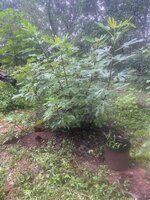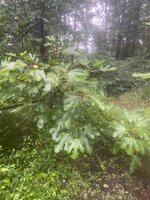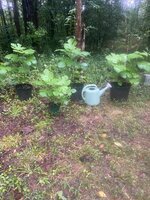Unlike the trees in the first two photos, this one loves to send out new trees from the ground.
It is almost 6 feet tall in its third year, has produced more vegetation than any of the other trees with no added nitrogen or pruning but has not produced a single ripe fig. However, it produced 4 tiny figs the last week of July, probably too late to ripen this year.
It is almost 6 feet tall in its third year, has produced more vegetation than any of the other trees with no added nitrogen or pruning but has not produced a single ripe fig. However, it produced 4 tiny figs the last week of July, probably too late to ripen this year.





